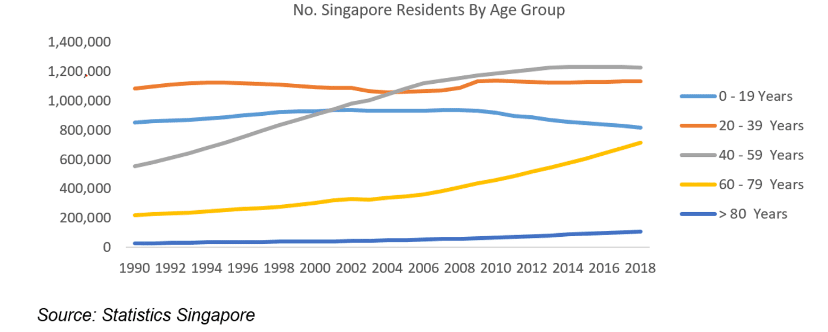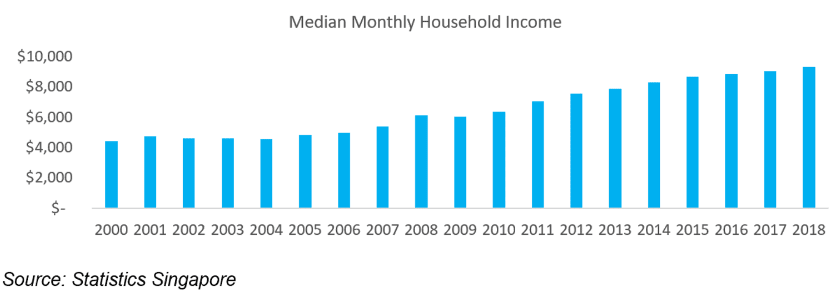Consolidation is observed in several industries ranging from financial institutions to retailers, and has been gaining a similar momentum in the healthcare industry. While consolidation in the healthcare industry may not be a new phenomenon, we continue to observe standalone clinics merging and acquiring to form a bigger group.
A recent example is Asian Healthcare Specialists Limited ("AHS") that consists of five orthopaedic medical specialists operating four clinics. AHS announced in July 2019 that it has entered into a term sheet to acquire 51 per cent of Cornerstone Asia Health, a healthcare group that offers services in ophthalmology, urology, dermatology, gastroenterology and family medicine in eight specialist and family medicine clinics.
Alliance Healthcare Group Limited consists of 17 GP Clinics across Singapore and five specialist care clinics listed in May 2019 has announced in its IPO prospectus the intention to expand its network of GP clinics in Singapore through acquisitions.
In our opinion, the consolidation of private clinics in Singapore is largely due to the interventions of the Government to lower the increasing cost of healthcare, addressing the healthcare needs of an ageing population and tackling the rising cases of chronic diseases due to a wealthier nation.
1. Increasing Cost of Healthcare
The Mercer Mash Benefits 2019 Medical Trends around the World Report, released on 10 June 2019 highlighted that Singapore’s medical trend rate, also known as inflation in medical cost, was 10 per cent in 2018 and is expected to increase by 0.1 per cent in 2019. The increase is mainly contributed by the administrative costs that makes up 20 per cent of total healthcare expenditures.
2. Ageing Population
Characterised by increasing life expectancy and declining birth rates, Singapore (like most developed countries) is faced with an ageing population. As illustrated in the following chart, there is a significant increase in the number of Singapore residents in the age groups of 40 – 59 years and 60 – 79 years between 1990 and 2018.
3. Wealthier Nation
Today, as Singapore progresses towards a wealthier nation, we face health problems which are more closely linked to stress and lifestyle options. The top five chronic health conditions are high blood pressure; high blood cholesterol; cataract; joint pain, arthritis, rheumatism or nerve pain; and diabetes. According to the National Healthcare Group – River of Life Report published in May 2019, chronic disease such as diabetes, could grow from 450,000 patients to 1 million patients by 2050 if necessary measures are not put in place..
AN EXPANDING PUBLIC HEALTHCARE SECTOR
In view of the above trends, several government initiatives have been rolled out. These initiatives include making the healthcare services more accessible and providing greater subsidies for the pioneer generation especially for chronic diseases.
In order to make healthcare services more accessible, hospitals and polyclinics were built in the heartland districts - two polyclinics were built in Pioneer and Punggol in 2017, and as highlighted in PM Lee Hsien Loong’s National Day Rally Speech 2018, six more polyclinics are projected to be built by 2023.
In the past, private clinics could maintain their differentiating factor by offering customers greater accessibility and shorter waiting time compared to public hospitals or polyclinics which were located further from the heartlands and regularly ridden with long queues. However, this recent proliferation of government initiative to improve public healthcare by bringing them nearer to the citizens had inadvertently threatened the sustainability of traditional, private healthcare practices due to greater difficulty of differentiation.
In March 2019, Health Minister Gan Kim Yong has shared that the healthcare subsidies given out had risen from S$ 2.6 billion to S$ 5.6 billion since 2010. This increase in healthcare subsidies to the citizens has made private healthcare players less attractive thus pose a challenge to operate competitively.
CONSOLIDATION PRESENTS A GREATER OPPORTUNITY
As such, there is a need for private standalone clinics to reassess their current business models and explore the option of merging with other clinics. With clinics consolidation, it could be a solution for addressing the rising operating cost and changing perspective of medical professionals.
1. Lowering Operating Costs
Since it is challenging for private clinics to compete with the expanding public healthcare sector, consolidation offers an innovative solution by integrating clinics to combine their non-core business processes. Streamlining operational roles such as human resource, accounting and administrative duties can significantly save costs. Meanwhile, doctors can still work as locums or contract service providers that focus more on their expertise.
Typically, clinics would purchase drugs from distributors who would source through their extensive distributive network while the public healthcare service providers purchase directly from the principals. Thus, a private clinic is naturally positioned at a disadvantage due to the lower quantum purchases with higher prices from the distributors. However, if clinics consolidate, their purchases could be pooled and therefore enjoy better discounts either from the distributors or principals.
2. Changing Perspectives of Medical Professionals
Finally, consolidation of clinics is relevant to the healthcare scene today, as the perspective of medical professionals is changing. There is a difference in the mind-sets of the younger and older generations of medical professionals. While millennial doctors still express deep passion for their medical profession, millennials are generally placing a larger priority on work-life balance and self-identity, as compared to their older counterparts. A survey by the American Medical Association ("AMA") and M3 Global Research found that 92 per cent of the millennial respondents recognised the importance of having a good balance between work and personal lives.
Therefore in a larger consolidated group, doctors can be rotated and a locum system can be established to address the concerns of the millennial generation of doctors. The traditional use of locums (or locum tenens) is a substitute semi-permanent doctor. However, locums could be a potential long-term career option for the private healthcare sector. Opting to be a locum saves doctors the hassle of concerning themselves with the business operations of a private practice, yet still able to enjoy the flexibility and freedom of having their own clinics. They can still devote their time to pursue other interests, such as running their own businesses, engaging in hobbies and taking time to explore different ventures.
CONSOLIDATION AS A SOLUTION
Consolidation of private clinics is an option which addresses obstacles faced by private professionals today, due to governmental intervention, while still furthering the personal objectives of the younger generation of practitioners.
The above content was provided by Mr Keith Tan, Business Consulting Manager, Healthcare Practice.



